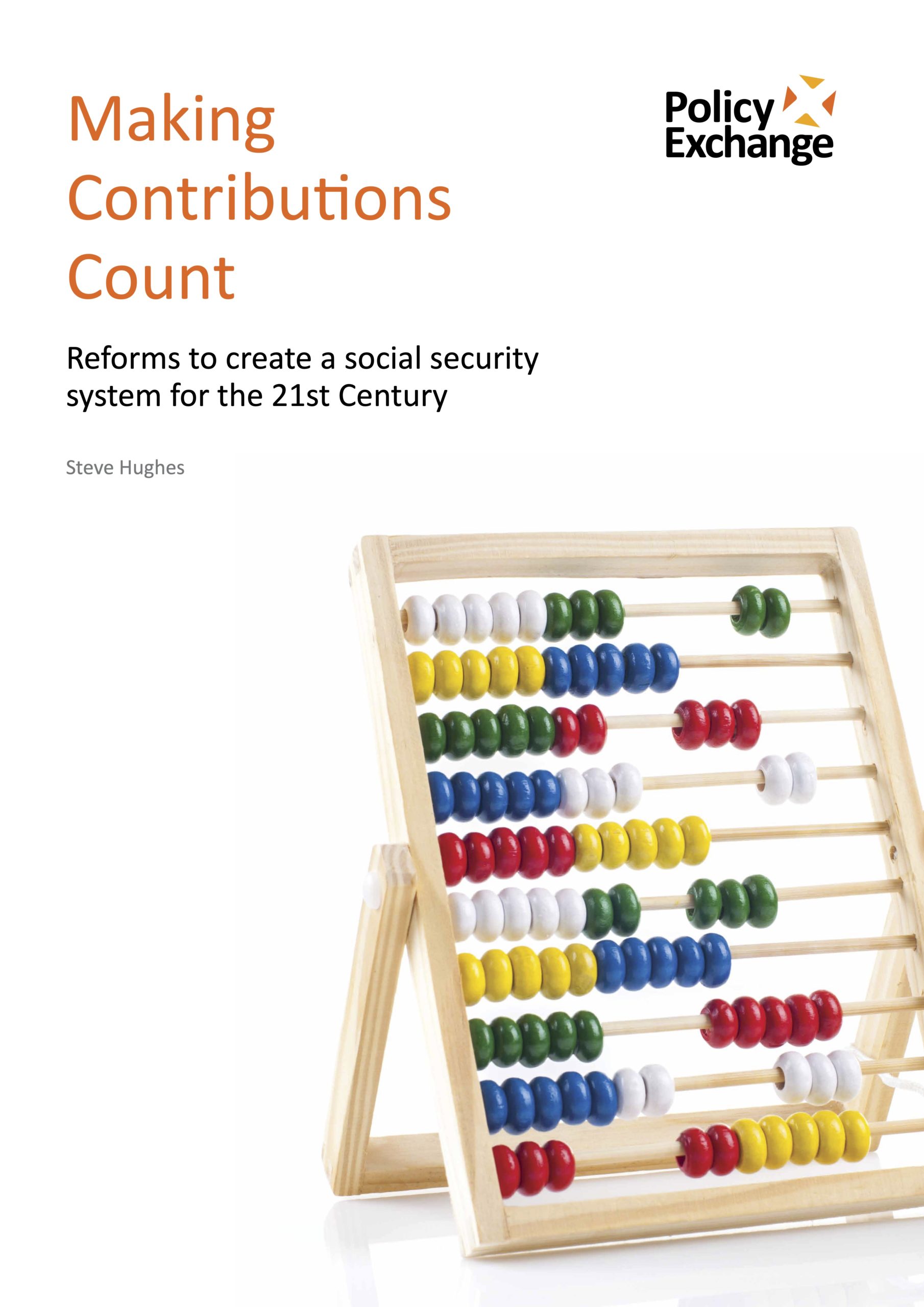
Making Contributions Count: Reforms to create a social security system for the 21st Century
Every worker in Britain will have to pay into a new unemployment insurance scheme which will put personal contribution at the heart of the welfare system. For the first time people who have worked hard and paid their taxes will receive a greater level of out of work support. The majority of people who work all their lives could end up with a £10,000 pot when they retire, providing a significant income boost considering the average pension pot is just £36,800.
The report says that public trust in the benefits system will not be restored until the link between what people have put in and what they get out is improved. Contributory benefits accounted for 41% of the working age welfare bill in the late 1970s, compared to 10% now.Making Contributions Count calls for the next government to legislate for a new welfare system that establishes a clear link between contribution and benefits.
Under the plan, every worker in Britain would contribute a small proportion of their weekly earnings into a new nationwide unemployment insurance scheme. To make sure hardworking Brits aren’t losing out, the government would offset the cost of participating in the scheme through a reduction in National Insurance for employees. The insurance scheme, run by the private sector but guaranteed by the government, would cover the costs of the first three months of unemployment, replacing the contributory element of Jobseekers’ Allowance* (JSA). The new scheme could lead to billions of pounds worth of savings for the government in the long term.
At the same time every worker – including the 4.6million self-employed who are currently not eligible for JSA – would be given a personal welfare account, ‘My Fund’, amounting to at least £5 a week or £260 a year. People would be able to build up their fund (and add to it) over the course of their working lives, drawing down on it in times of need such as to retrain for a new profession, something which is becoming increasingly important as the state retirement age rises and people decide to work longer. Upon retirement, any money left in an individual’s account would go towards their pension package.
Further details of the new scheme can be found below:
- Individuals would contribute a small proportion of their weekly earnings to the scheme, offset by a reduction in National Insurance payments. This would generate £8billion a year.
- £2billion of this would go towards an unemployment insurance scheme to partly cover the costs of the first three months of unemployment, replacing the contributory element of Jobseeker’s Allowance (JSA (c)).
- The remainder (£6billion) would fund a system of individual welfare accounts (‘My Fund’), built around the principle that “it’s your money”. People working over 20hours a week would contribute to a personal welfare account, amounting to at least £5 a week or £260 a year.
- People would be able to top up their welfare accounts by up to £100 a week. In times of need, these accumulated savings could be used flexibly, for example, to fund retraining, and, as such, will provide a greater level of support than JSA and Universal Credit.
- Universal Credit would act as a safety net for people who run down their pots or have a poor contribution record.
- The scheme would not be administered by the government. Instead, to encourage providers to compete for customers based on their service and to ensure funds are sufficiently large to act as effective social insurance, a small number of providers (including insurer and fund managers) should be licensed to offer schemes to every individual.
- To limit exposure to uninsurable risks the government would guarantee the scheme as a lender of last resort, meaning that if unemployment rose significantly and unexpectedly government would cover the extra costs.

